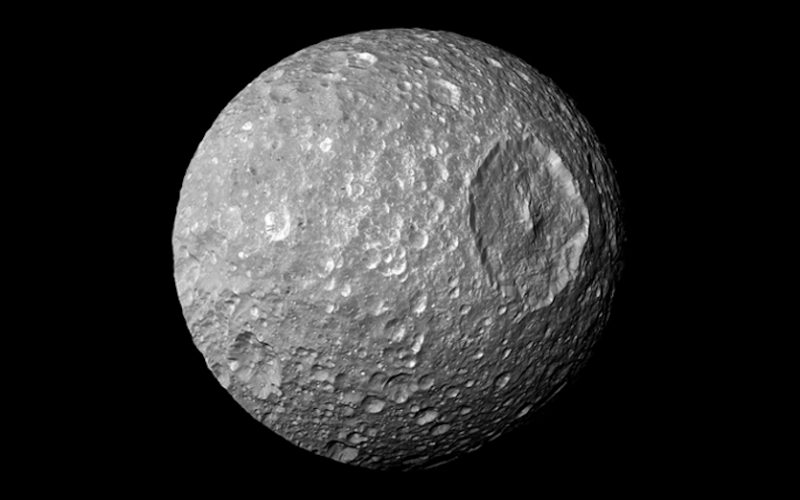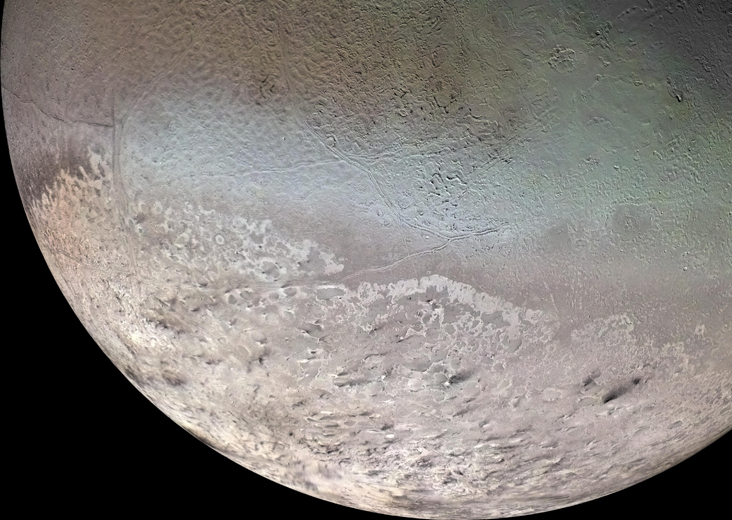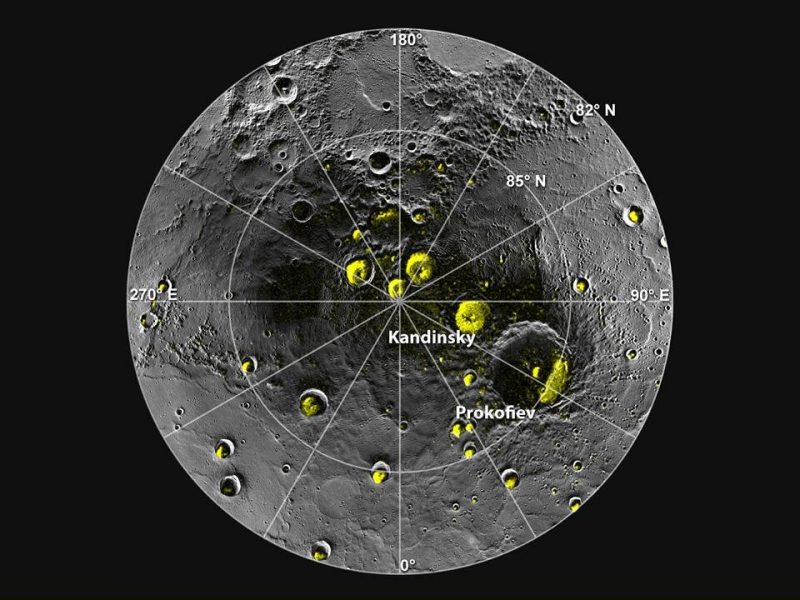
On Earth, you can find snow at the poles and on tops of mountains in tropical climates and covering the ground over months-long stretches of winter. But did you know there are many other places in the solar system that are also home to snow? Here are just 10 locations beyond Earth where you might find snow or ice of various kinds.
EarthSky 2022 lunar calendars now available! Order now. Going fast!
#1 – Earth’s moon
At one time we thought the moon was bone dry. But NASA’s Lunar Reconnaissance Orbiter (LRO) has shown us otherwise. It has spotted small patches of ice that could make up 5% to 10% of material in the walls of Shackleton crater. LRO is one of several spacecraft that have detected water ice in shadowy craters near the north and south poles of the moon.

#2 – Mars
The north and south poles of Mars have ice caps that grow and shrink with the seasons. These ice caps are made mainly of water ice, which is the same kind of ice you’d find on Earth. However, the snow that falls there is made of carbon dioxide. On Earth, frozen carbon dioxide is what we call dry ice. Carbon dioxide is in the Martian atmosphere where it can make clouds and freeze and fall to the surface as snow. NASA’s Mars Reconnaissance Orbiter has seen many instances of snowfall on Mars.

#3 – Io
Of all Jupiter’s moons, you may not think of its volcanic moon, Io, as a place for snow. But the moon has “snowflakes” made of sulfur. In 2001, NASA’s Galileo spacecraft detected these sulfur snowflakes just above Io’s south pole. The sulfur shoots into space from a volcano on Io’s surface. In space, the sulfur quickly freezes to form snowflakes that fall back down to the surface.

#4 – Europa
Jupiter’s moon Europa is an icy world with a liquid ocean below the frozen surface. NASA is planning a mission – Europa Clipper – to further explore Europa with a launch slated for 2024. Europa’s icy, cracked crust and subsurface ocean may be one of the best places in the solar system for life to have taken hold.

#5 – Enceladus
Saturn’s moon Enceladus has geysers that shoot water vapor out into space. It then freezes and falls back to the surface as snow. Some of the ice also escapes Enceladus to become part of Saturn’s rings. The water vapor comes from a heated ocean that lies beneath the moon’s icy surface. All this ice and snow make Enceladus one of the brightest objects in our solar system.

#6 – Mimas
Saturn’s small moon Mimas, despite its Death Star look, is actually just a ball of almost pure water ice about 123 miles (198 km) across.

#7 – Triton
Neptune’s largest moon is Triton. It has one of the coldest surfaces in our solar system. Triton’s atmosphere consists mainly of nitrogen, which freezes onto its surface. Triton also has geysers like Enceladus, though they are smaller and made of nitrogen rather than water.

#8 – Pluto
Far out in our solar system lies the dwarf planet Pluto. In 2016, scientists with the New Horizons mission discovered a mountain chain on Pluto where the mountains were capped with methane snow and ice.

#9 – Mercury
Surprise! We went all the way to the fringes of the solar system only to come back close to the sun. NASA’s MESSENGER spacecraft provided compelling support for the long-held hypothesis that Mercury harbors abundant water ice and other frozen volatile materials in its permanently shadowed polar craters.

#10 – Kepler-13Ab
Snow and ice probably exist outside our solar system, too. One bizarre example of that is Kepler-13Ab. This hot, giant planet is 1,730 light-years from Earth. It’s nine times more massive than Jupiter, and it orbits very close to its star. The Hubble Space Telescope detected evidence of titanium oxide – the mineral used in sunscreen – in this planet’s upper atmosphere. On the cooler side of Kepler-13Ab that faces away from its host star, the planet’s strong gravity might cause the titanium oxide to fall down as “snow.”

Bottom line: On Earth, you can find snow at the poles and on tops of mountains in tropical climates and covering the ground over long stretches of winter. There are plenty of other places in the solar system, and probably the universe, that are home to snow as well.











